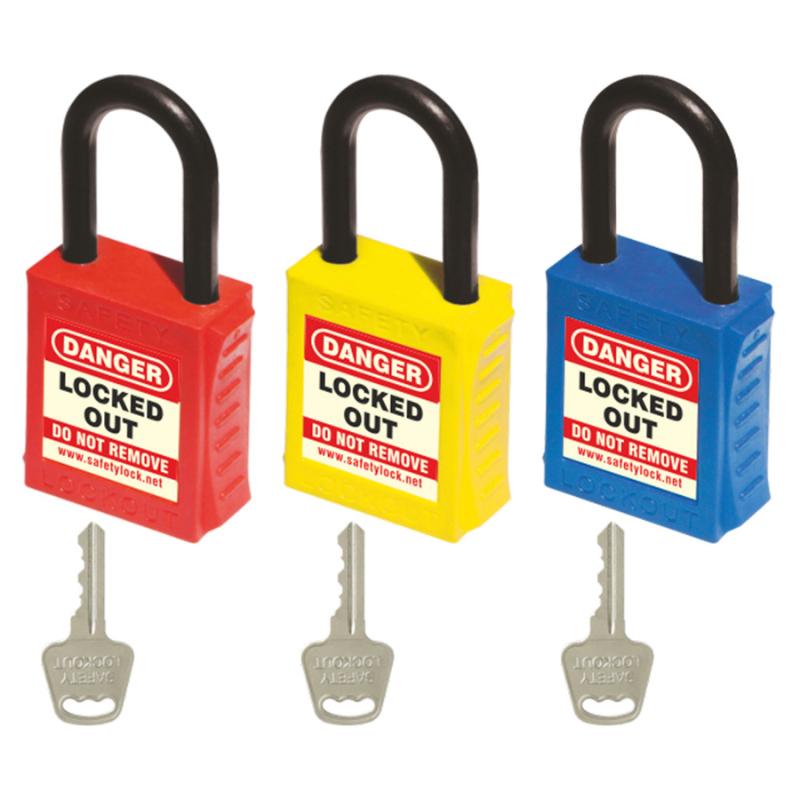Common Challenges in Lockout Tagout Compliance

Common Challenges in Lockout Tagout Compliance
In industries where heavy and hazardous machinery is operated, accidents are a common occurrence. However, such accidents can be prevented with the use of proper safety procedures and guidelines. Lockout Tagout is one such process that protects workers from hazardous energy release injuries during maintenance and repair procedures.
According to OSHA, “The Control of Hazardous Energy (Lockout Tagout) (29 CFR 1910.147) for general industry outlines measures for controlling different types of hazardous energy.” Lockout Tagout is the process of de-energizing and securing equipment, machinery, or processes to prevent dangerous energy from being reintroduced during maintenance or repair activities. Ever since its introduction by OSHA, it has been protecting workers from hazardous energy release and service work accidents.
Lockout Tagout compliance is not only necessary to ensure continued productivity but also to protect precious lives. In this article, we will discuss various challenges you might face while implementing LOTO, and strategies to effectively apply lockout tagout with a few real-life examples.
Understanding Lockout Tagout Compliance:
The United States Occupational Safety and Health Administration (OSHA) developed the regulation for the control of hazardous energy (Lockout/Tagout), Title 29 Code of Federal Regulations (CFR) Part 1910.147, in 1982 to help protect workers who routinely service workplace equipment.
Workers must be protected against the unexpected release of hazardous energy during repair work. This hazardous energy can be in the form of:
- Electrical (live wires, charged capacitors, energized circuits)
- Mechanical (moving parts like gears, blades, rollers; springs under tension)
- Pneumatic (compressed air, debris)
- Hydraulic (high-pressure fluids)
- Chemical (reactive chemicals, pressurized gas containers)
- Thermal (ovens, boilers, freezers)
- Gravitational energies (suspended overhead objects, heavy components)
and many more.
As each industry has unique safety challenges and requirements, it is essential to implement LOTO solutions tailored to the specific needs of each sector.
Regulatory Compliance
The Lockout Tagout guidelines by OSHA detail the protocols and steps required to deactivate and de-energize machinery or equipment to avoid the release of hazardous energy.
ISO (International Organization for Standardization) 14118 "Safety of Machinery" and the US standard ANSI/ASSE Z244, are two other international standards that outline the use of "Zero Energy" (the no-voltage principle to avoid dangers when running devices). The ANSI/ASSP Z244.1 standard specifies guidelines for regulating hazardous energy using lockout/tagout procedures and alternate approaches.
- Such standards assure safety on another level:
- Save lives by averting roughly 50,000 lockout tagout accidents and 120 fatalities every year.
- Reduce expenditures by minimizing labour time and insurance costs.
- Increase production by minimizing equipment downtime.
Common Challenges in LOTO Compliance:
Let’s discuss a few commonly faced challenges for Lockout Tagout and how you can effectively deal with them to ensure maximum safety.
Lack of Awareness and Training:
Inadequate Lockout Tagout training is one of the key reasons for LOTO failure. When authorized workers are not effectively trained on how to shut off, de-energize, and isolate hazardous energy sources, it leads to a lack of responsibility and careless application. At the same time, when affected employees are not trained on how to stay aware and be considerate of the ongoing process, they could unknowingly cause machine re-energization and put others in harm’s way.
To avoid any careless mistakes, every worker, especially authorized employees, must be trained to follow the written procedures. Giving in-person or interactive training to the right person will ensure that all procedures are being followed correctly, and it gives the authorized employee a sense of responsibility towards their safety. It is imperative to incorporate training and re-training in every safety protocol and update regularly.
Cultural Barriers:
Another critical challenge is the worker’s mindset. Workers often believe that lockout tagout is a time-consuming process and is not important. They fail to understand the hazards present even during routine maintenance and repair. In their rush to finish the day’s production and meet deadlines, they often don’t use LOTO devices or skip the written steps.
It is the employer’s duty to enforce the safety guidelines and develop a safety culture for all workers. When the employer demonstrates the need for effective and proper safety guidelines, the employee must follow all the rules and regulations. It creates a sense of safety and care for employee well-being, leading to a safety-first work culture.
Resource Constraints:
Often businesses think that Lockout Tagout is an expensive process.
Their budget constraints and other resource limitations lead companies to cut off excess expenses and prioritize their expenditures, which often results in safety protocols being overlooked.
In the long run, lockout tagout procedures save money, time, and lives. A proper lockout tagout process can be budget-friendly while being effective. High-risk areas require proper lockout tagout, but implementing LOTO is not an expensive task. Providing employees with adequate training and quality devices ensures a safety culture and more profits.
Technological Limitations:
Another reason for accidents, even when lockout tagout is applied, is technological limitations-rusted panels, outdated machinery, advanced energy control devices, and much more. Such equipment can cause re-energization even if a Lockout Tagout device is applied.
It is important to update and inspect your machinery and equipment for rust, broken panels, or any other limitations which might put a worker in harm’s way. Another method to ensure safety is to customize the LOTO device according to the machine’s specific requirement, whether through retrofitting or developing a new device especially for that equipment.








Comments